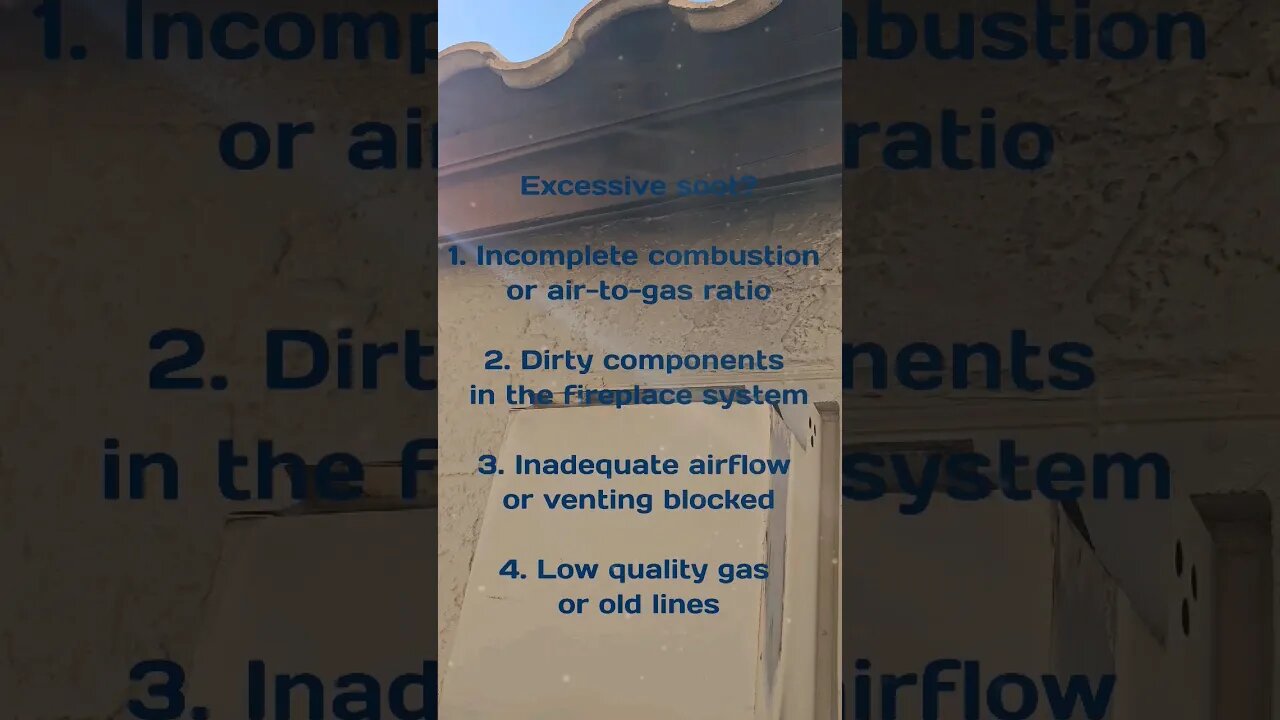Premium Only Content

Does your fireplace produce a lot of soot?
Several factors can contribute to a gas fireplace producing a lot of soot. Here are some common causes:
Incomplete combustion: One of the main reasons for excessive soot production is incomplete combustion. If the air-to-gas ratio is not properly balanced, the combustion process may be inefficient, leading to the formation of soot. This can be caused by issues such as a clogged burner or dirty or malfunctioning gas jets.
Poor ventilation: Inadequate ventilation can hinder the proper flow of air and result in incomplete combustion. If the fireplace does not have enough fresh air supply or if the venting system is obstructed or improperly installed, it can contribute to soot buildup.
Dirty or malfunctioning components: Soot accumulation can occur if there are dirty or malfunctioning components within the gas fireplace system. For example, a dirty burner or faulty thermocouple can affect the combustion process and lead to increased soot production.
Low-quality or incorrect gas fuel: The type and quality of the gas fuel used can also impact soot production. Low-quality or impure gas can contain contaminants that contribute to soot formation. Additionally, using the wrong type of gas for your specific fireplace model can lead to inefficient combustion and increased soot output.
Lack of maintenance: Regular maintenance is essential for keeping a gas fireplace functioning optimally. Failure to clean and maintain the fireplace, including the burners, vents, and other components, can lead to soot accumulation over time.
Improper installation: If the gas fireplace was not installed correctly, it can cause airflow issues or result in an improper gas-to-air mixture, leading to excessive soot production.
-
 0:15
0:15
Home Inspector Dan
1 year agoThe Truth Behind Why the USA Stopped Selling VW TDI
62 -
 2:55:11
2:55:11
Barry Cunningham
5 hours agoPRESIDENT TRUMP MADE TODAY A VERY BAD DAY TO BE A DEMOCRAT!
66.5K45 -
 1:15:29
1:15:29
Flyover Conservatives
22 hours agoFrom Cool to Cringe: How Democrats Lost America’s Ear | FOC Show
23.5K3 -
 8:19
8:19
MattMorseTV
9 hours ago $0.26 earnedTrump is ACTUALLY DOING IT.
21.5K32 -

ZWOGs
11 hours ago🔴LIVE IN 1440p! - Tarkov w/ Casey & crgoodw1n, Kingdom Come Deliverance, & More - Come Hang Out!
18K5 -
 LIVE
LIVE
We Like Shooting
15 hours ago $0.03 earnedWe Like Shooting 625 (Gun Podcast)
189 watching -
 1:45:02
1:45:02
Glenn Greenwald
6 hours agoIsrael Slaughters More Journalists, Hiding War Crimes; Trump's Unconstitutional Flag Burning Ban; Glenn Takes Your Questions | SYSTEM UPDATE #504
113K124 -
 1:29:31
1:29:31
Killerperk
3 hours ago $0.36 earnedRoad to BF6. Come hang out #regiment #bf6
19.8K1 -
 LIVE
LIVE
Jokeuhl Gaming and Chat
4 hours agoDARKTIDE - Warhammer 40k w/ Nubes Bloobs and AoA
40 watching -
 LIVE
LIVE
Cripiechuccles
5 hours ago😁💚💙MOTA MONDAY WITH CRIPIE💚💙 👌SMOKING, GAMING & WATCHING FLICKS!:😁
43 watching